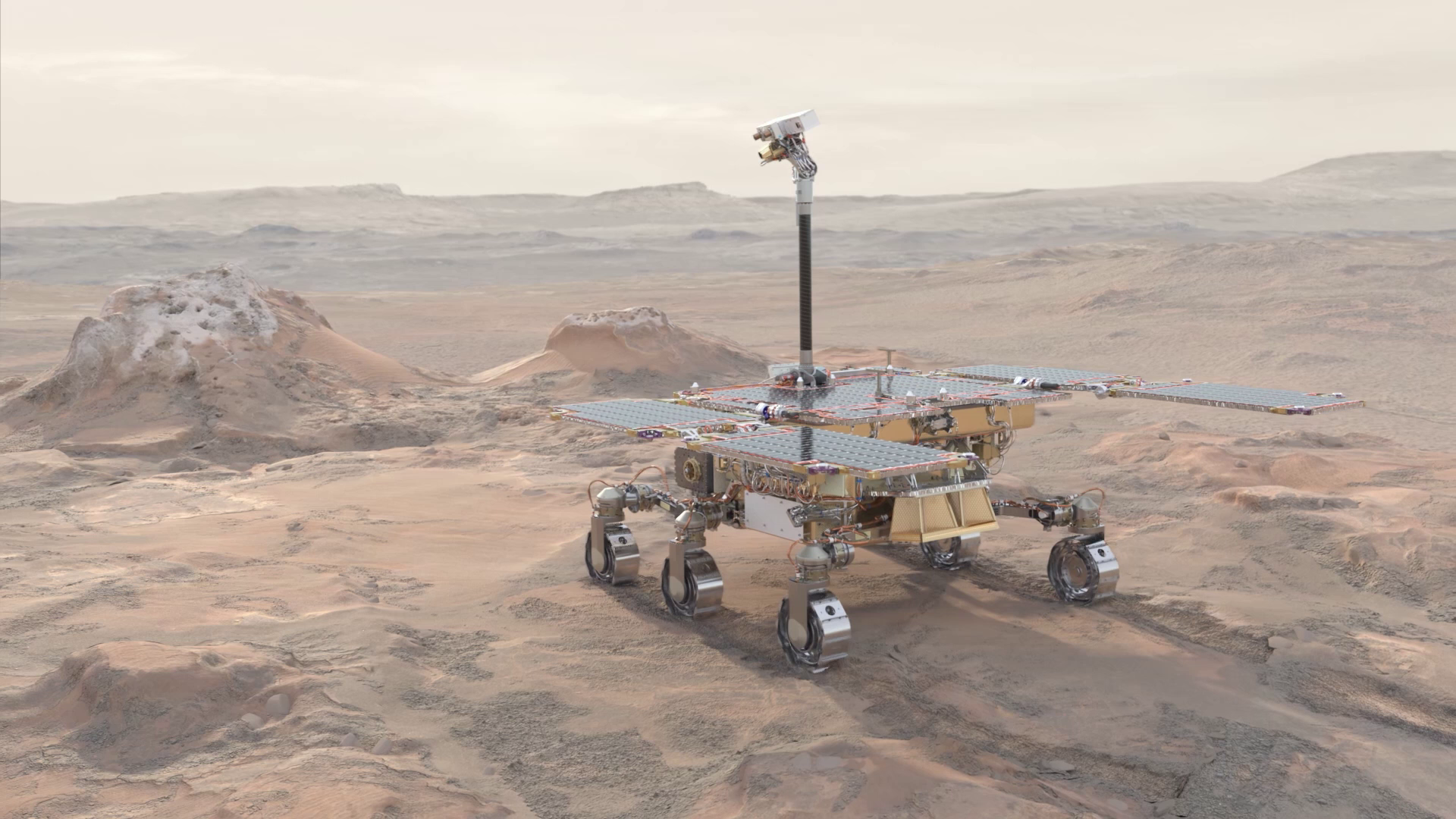ESA and NASA join forces to land Europe’s rover on Mars
ESA and NASA are consolidating their cooperation on the ExoMars Rosalind Franklin mission with an agreement that ensures important US contributions, such as the launch service, elements of the propulsion system needed for landing on Mars and heater units for the Rosalind Franklin rover.
Both agencies have signed a new Memorandum of Understanding to formalise the provision of key elements for the Rosalind Franklin rover mission. ESA is working to launch in 2028 its most ambitious exploration mission to search for past and present signs of life on Mars.
ESA’s Director of Human and Robotic Exploration Daniel Neuenschwander and NASA’s Associate Administrator for the Science Mission Directorate Nicola Fox signed the agreement on 16 May 2024 at ESA’s headquarters in Paris, France.

Two years ago, due to the Russian invasion of Ukraine, ESA discontinued its cooperation with Roscosmos on the ExoMars rover mission. In an extraordinary effort, ESA, its Member States and European industry reshaped the mission with new synergies and partnerships.
Besides the launch service and throttleable braking engines, the main update is that NASA in partnership with US Department of Energy (DOE) will provide the lightweight radioisotope heater units (RHUs) for the rover. Led by the UK, work on the development and certification of a European RHU to fly on the mission will continue in parallel. The ESA GSTP/ENDURE programme (ENDURE standing for ‘European Devices Using Radioisotope Energy’) will deliver an end-to-end European capability for radioisotope heat and power systems by the end of this decade.
“This pivotal agreement strengthens our collaborative efforts for the ExoMars programme and ensures that the Rosalind Franklin rover will set its wheels on martian soil in 2030,” said Daniel Neuenschwander.
“Together, we are opening new frontiers in our quest to uncover the mysteries of Mars. We demonstrate our commitment to pioneering space exploration and expanding human knowledge,” he added.


Access the video
Rosalind Franklin will be the first rover to drill to a depth of up to two metres below the surface, acquiring samples that have been protected from surface radiation and extreme temperatures. The mission will serve to demonstrate key technologies that Europe needs to master for future planetary exploration missions.
“The Rosalind Franklin rover’s unique drilling capabilities and onboard samples laboratory have outstanding scientific value for humanity’s search for evidence of past life on Mars,” said NASA's Nicola Fox. “NASA supports the Rosalind Franklin mission to continue the strong partnership between the United States and Europe to explore the unknown in our solar system and beyond.”
The next milestone will be the rover’s system preliminary design review in June 2024.














 Germany
Germany
 Austria
Austria
 Belgium
Belgium
 Denmark
Denmark
 Spain
Spain
 Estonia
Estonia
 Finland
Finland
 France
France
 Greece
Greece
 Hungary
Hungary
 Ireland
Ireland
 Italy
Italy
 Luxembourg
Luxembourg
 Norway
Norway
 The Netherlands
The Netherlands
 Poland
Poland
 Portugal
Portugal
 Czechia
Czechia
 Romania
Romania
 United Kingdom
United Kingdom
 Slovenia
Slovenia
 Sweden
Sweden
 Switzerland
Switzerland

























